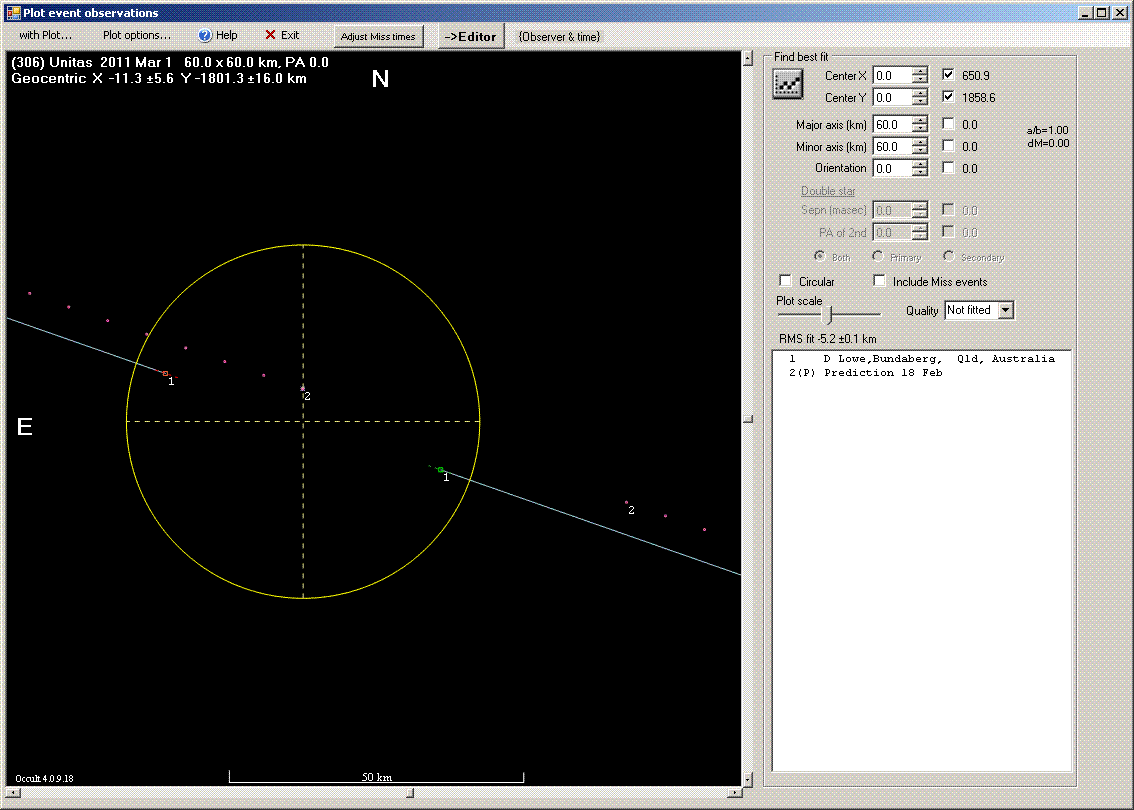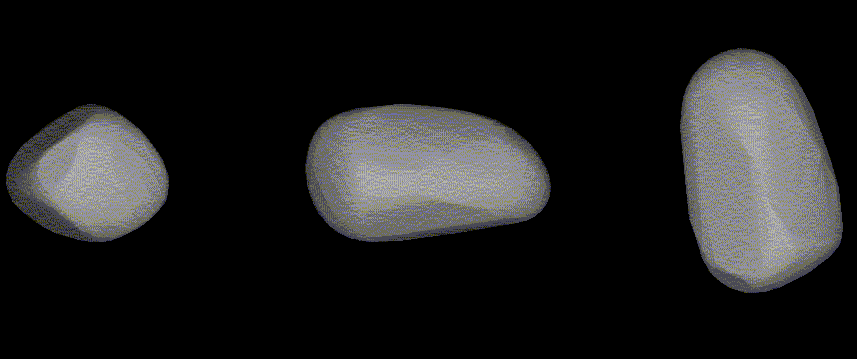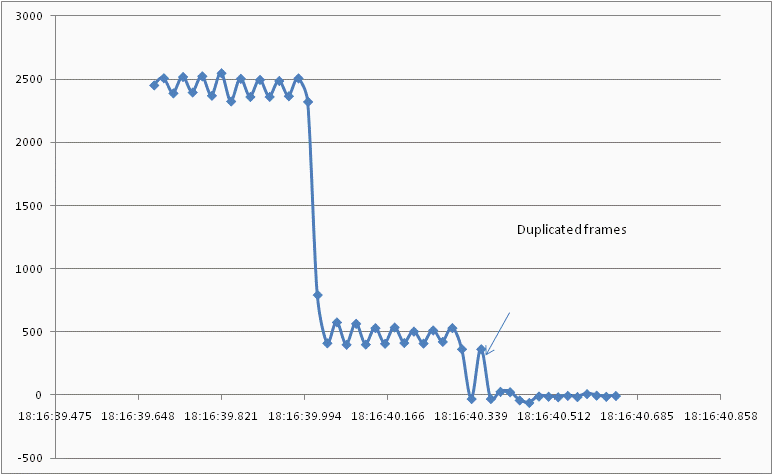|
|
A 7 second occultation was recorded by Dennis Lowe, using video OSD technique.
View the updated prediction.
Observers:
1 D Lowe,Bundaberg, Qld, Australia
2(P) Prediction 18 Feb

Discussion: The circle above is plotted at the expected 60 km diameter of Unitas. With only one chord it is not possible to determine whether Dennis was north or south of the central line of the event.

The Damit 3D model above shows some options that might fit the obseravtion but with only one chord we cannot get a fit.
The figure below shows the Limovie light curve of the occultation.

At first this got us excited as it looked like a classic double star pattern. But some of the resulting parameters suggested that it might not be. Upon very close examination the following picture emerged.


The WAT camera was using X8 integration and the steps are 8 frames wide, with the
complication of a duplicated frame at the second drop where the DVR has repeated
a frame to keep timing space correct. The steps are clear enough to be able to interpolate
where the actual D and R must have occured and these interpolated values are what is plotted.
The moral of this story is: Keep your integration setting as low as possible otherwise you
may be masking not only noise but what could have been interesting data. Use long integration
while lining up your field of view then turn it down so that you can just see the star clearly.
And don't start thinking double stars until you have eliminated integration steps as the cause.
Observational Data:
Observation details for MP ( 306 ) Unitas
By Star HIP HIP73565
On 2011-03-01 at 18:16:43.0
_______________________________
Observer Dennis Lowe
Location Bundaberg, Qld, Australia
Longitude +152:25
Latitude -24:52
Altitude 40 m
Datum WGS84
Telescope Refractor
Aperture 10 cm
Seeing Steady
Camera Type WAT120N PAL/CCIR
Camera Delay 0.17
Timing GPS - time inserted Video with frame analysis
Disappearance 18:16:39.74
Reappearance 18:16:46.80
Comments: WAT-120N+ x8 used. Intigration rate slow 4,
correction of -.170 applied to all times.
This data was originally thought to be a double star but step is and
artifact of integrating camera -jt